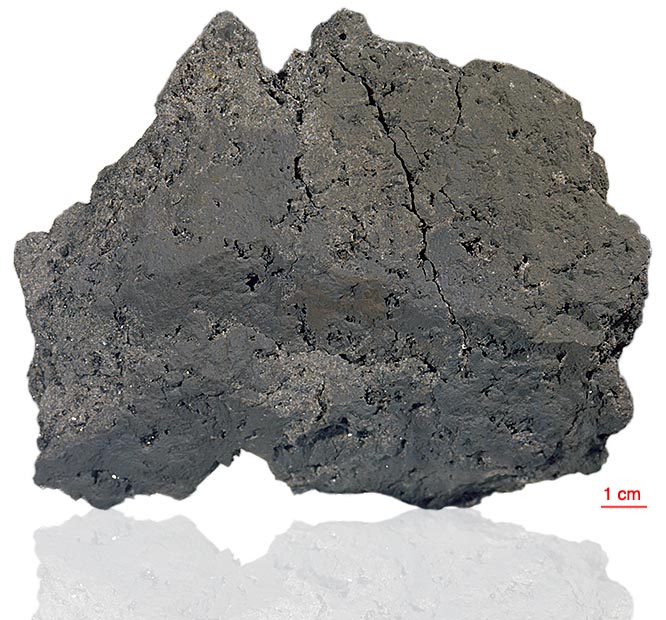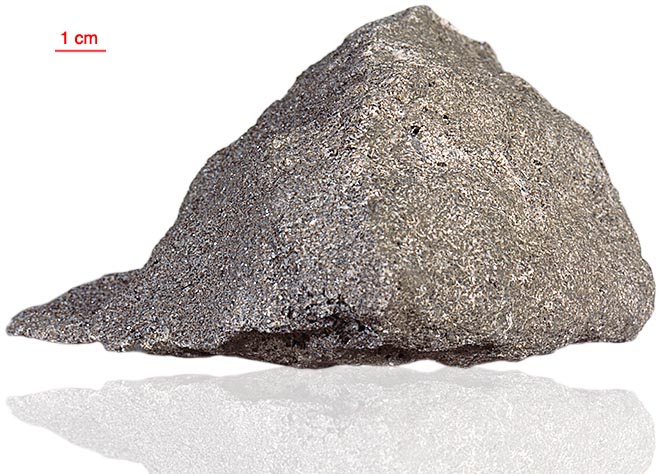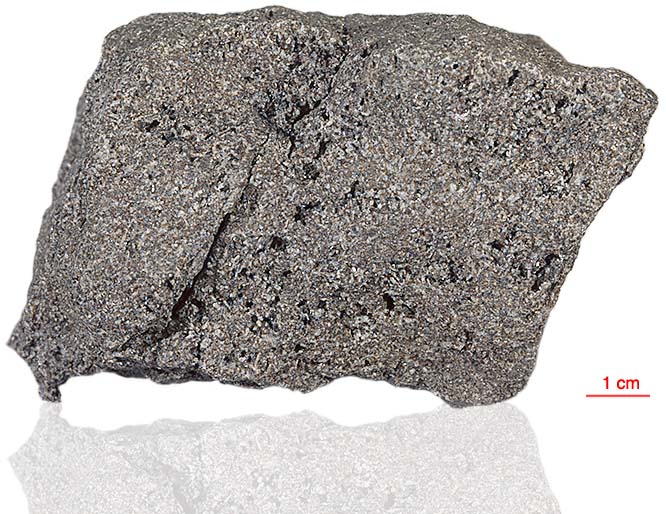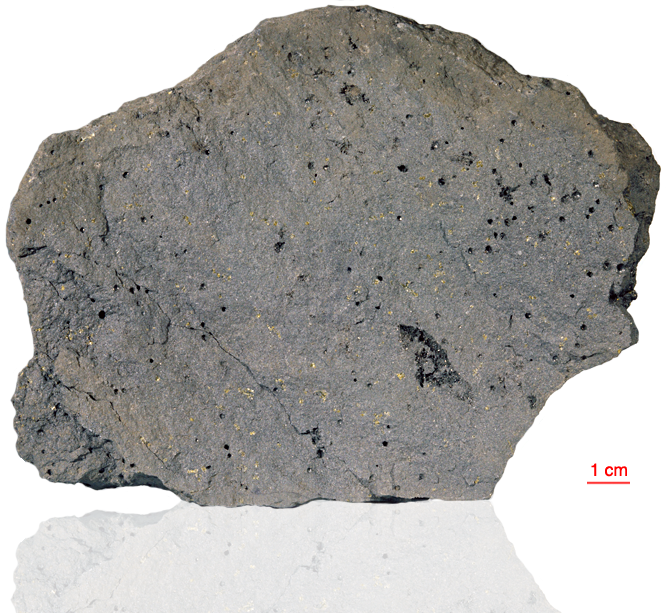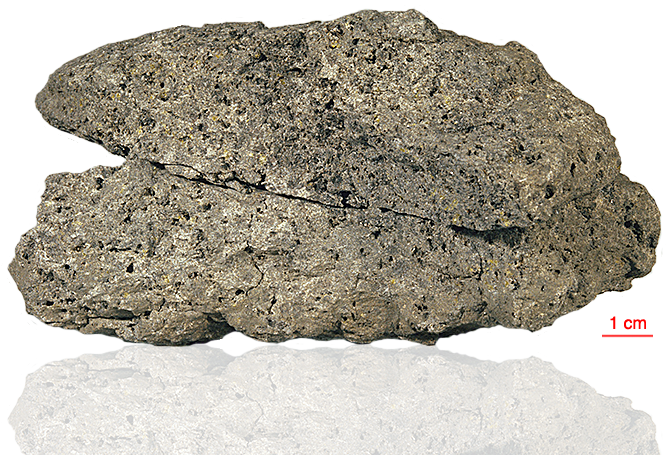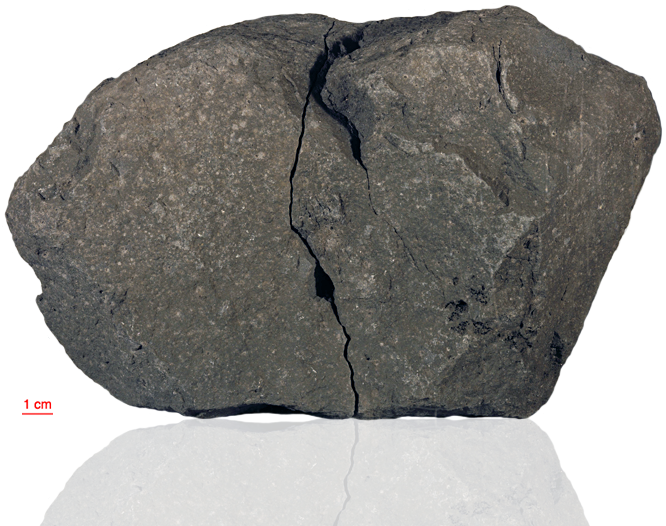
Fact sheet
70215 is a dense, fine-grained porphyritic mare basalt that has been used to create “touchstones” for public display. It was collected near the Lunar Module and is one of the largest stones returned from the Moon. It has variously been termed a “fine-grained, subvariolitic basalt”, “spherulitic, fine-grained high-Ti basalt”, “Type 1A, Apollo 17 high-Ti basalt”, “fine-grained porphyritic basalt” and “medium dark grey, fine-grained basalt”.
Our thin section consists of phenocrysts of olivine and ilmenite in a groundmass of fan-shaped intergrowths of plagioclase and pyroxene. The olivine displays a variety of shapesincluding elongate, hollow prisms, equant and subequant grains and skeletal, euhedral phenocrysts. Ilmenite phenocrysts occur as equant grains and as laths with irregular jagged edges which commonly contain cores of armalcolite and lamellae of rutile. The groundmass contains minute bow-tie intergrowths of plagioclase and pyroxene along with needle-like laths of ilmenite. Troilite and metallic iron occur in the groundmass.
The sample weighed 8110 grams before analysis. It has been dated at 3.85±0.08 billion years (Rb/Sr).
Further details of this and other Apollo samples are here: http://curator.jsc.nasa.gov/lunar/
Note the thin section is slightly thick.
Apollo 17, the final manned landing mission, had two objectives: to obtain samples of ancient rocks from the lunar highlands and to look for evidence of younger volcanic activity on the valley floor.
This small Collection contains material deriving from both periods, including igneous rocks around 4.3 billion years old from the lunar highlands as well as younger volcanic samples dating from about 3.6 billion years ago.
Apollo 17 was launched on 7 December 1972.
